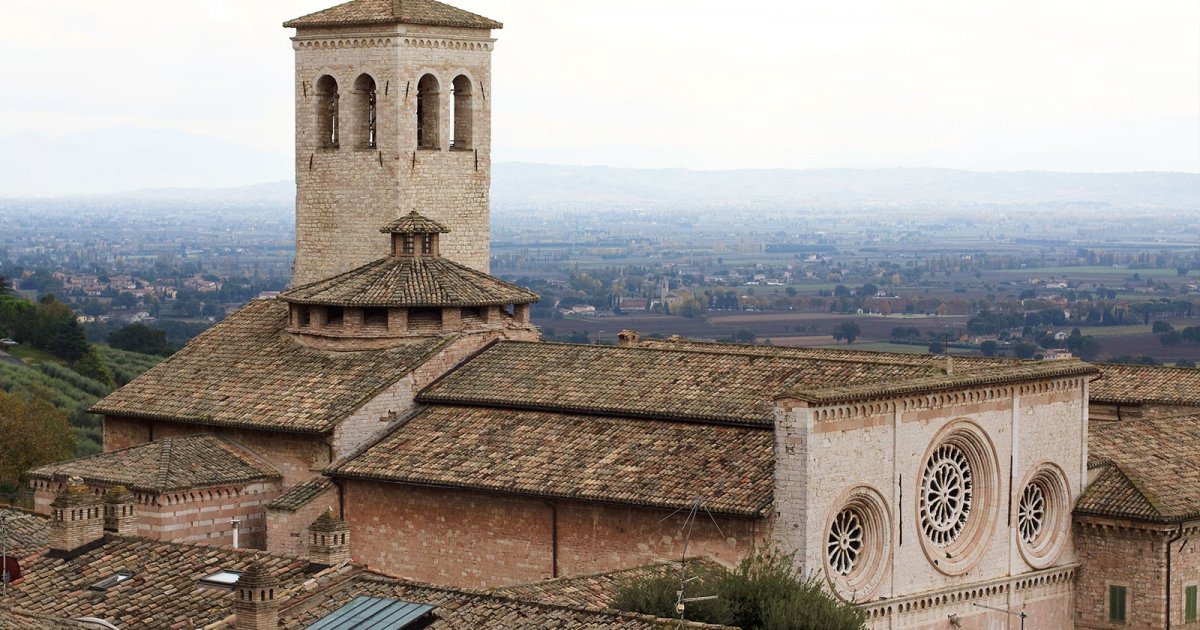ABBEY OF SAN PIETRO, Abbey Of San Pietro
 Language: English / USA
Language: English / USA
Hi, my name’s Scott, and I’m your personal guide. Along with MyWoWo, I’d like to welcome you to one of the Wonders of the World: the Abbey of San Pietro.
The Abbey of San Pietro, built in the mid-thirteenth century, brings together the compact power of Romanesque style with the sophistication and beauty of Gothic architecture.
If you’ve already visited other churches in Assisi, you’ll find this one familiar. The facade is divided into regular horizontal and vertical surfaces, embellished with elegant rose windows, and there are no sculptures breaking up the simplicity of the overall effect. You may notice that the triangular tympanum at the top is missing; it was dislodged during an earthquake! At the sides of the portal, you can see lions keeping away evil, represented by the animals being devoured.
The interior is bare, unadorned and solemn, with rectangular pillars, but it did not always look like this. If you walk up to the altar, you can see the cupola: the structure at the top of it is called a roof lantern, and is used to provide natural light to the cupola and the altar below it. The walls of the cupola were once covered with sparkling glazed terracotta tiles, now unfortunately gone.
In the 17th century, the interior was entirely covered with elaborate Baroque decorations, all of which were later removed during restoration work designed to return the abbey to its original medieval appearance. This is why the walls are now bare. But is this really what it looked like in the 13th century?
I recommend a visit to the area under the abbey, where you’ll find a museum illustrating the history of the building. Stop for a moment in the areas once used for preserving fruit and vegetables, and remember that the Benedictine monks followed the age-old rule of Saint Benedict, guided by the Latin motto “ora et labora”, meaning “pray and work”. For them, reclaiming and farming the land was just as important as prayer and copying ancient books.
Let me leave you with an interesting fact: at the end of the 19th century, after the Unification of Italy, many churches and convents became the property of the State. The impact of this on monuments was often catastrophic: they were sold and transformed, or even destroyed. Fortunately, the Abbot of San Pietro had founded the first farming colony in Italy here, to educate young people to civic life through agriculture. Thanks to him, the church was saved, and we can still admire it today.



